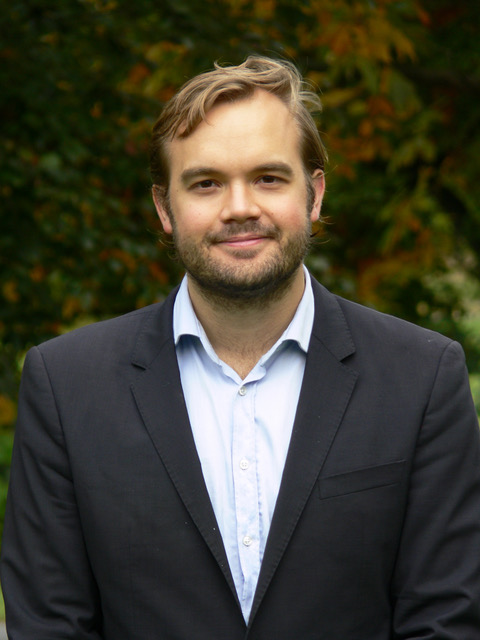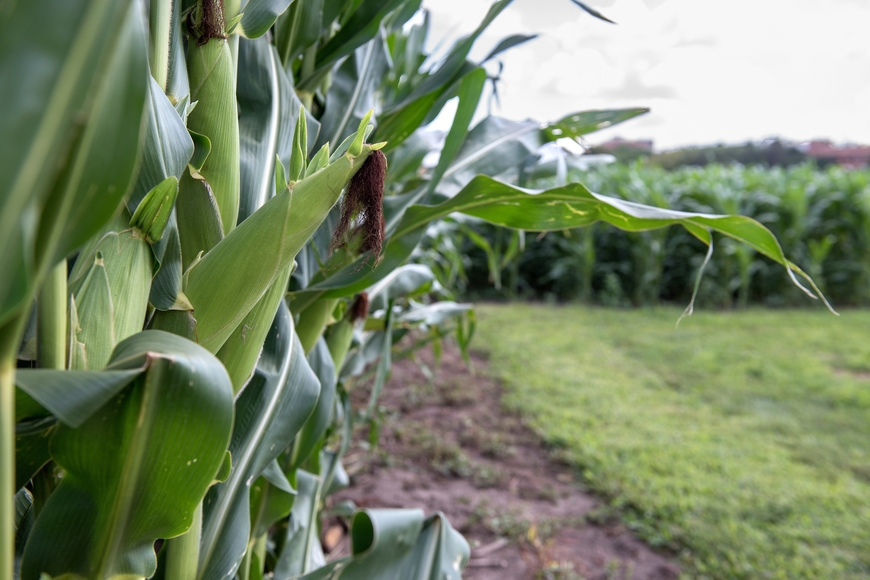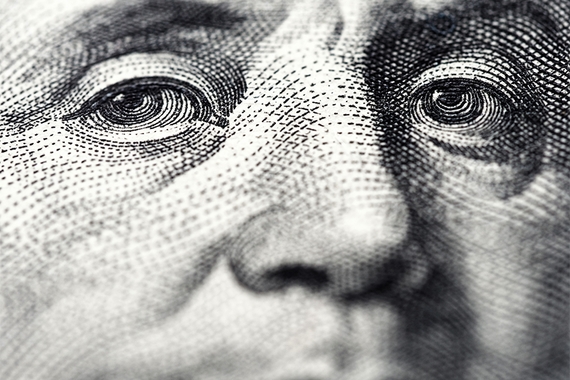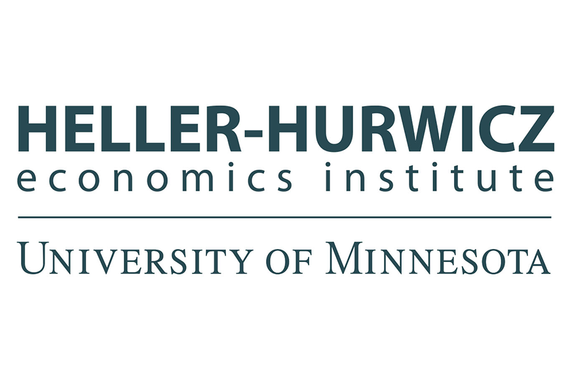The Macroeconomics of Intensive Agriculture
Let’s start by talking about you. What drew you to Minnesota?
I’m originally from Sweden and did my graduate studies there, and when you go on the academic job market, you apply for, like 100 jobs in a centralized database. I remember sitting with my wife going through the application and saying, “I’m going to apply for Minnesota.” She said, “Why Minnesota?”
When you’re a European, you don’t know much about the middle of this country. But in Sweden, we know Minnesota has a lot of Swedish immigrants. And I knew something else. I said to my wife, “You know what, Minnesota is great for economics, especially macroeconomics.”
What are the one or two key insights of your latest research?
You cannot consider the agriculture sector in isolation. Modern agriculture is defined by using much more machines and inputs and land per worker. Those things are critically determined by how expensive workers are relative to machines, relative to fertilizer and other inputs in agriculture. That’s not determined just by agriculture, it’s determined by the productivity of the whole economy.
Second, that the transformation where you replace labor with machines is much stronger in agriculture than in the rest of the economy. So as economies grow richer, this means that labor productivity in agricultural naturally might grow faster than the rest of the economy.

What attracted you to studying ag productivity, particularly in the Third World?
If you look at the poor countries in the world, agriculture is a huge part of their economy. As countries get richer, the share of agriculture falls. In the United States, it’s down to about 1 percent of GDP. But if you look at the poorest countries, it can be 25-50 percent, and an even larger share of employment.
My early research was actually focusing on the non-agricultural sector – manufacturing and trade patterns and those things. But then people came to me and said, “But isn’t agriculture the big deal in poor countries?” So that got me into thinking about how my research related to agriculture, and it became clear that there were a lot of connections. What happens in other parts of the economy affect agriculture.
For example, suppose that you set up a McDonald’s in a poor country and everybody could get a job at $10 an hour. And suppose we’re doing this in a country where the typical rate of pay might be in the range of a dollar a day. If that was true, agriculture would also be transformed, because the agricultural sector would also be forced to pay about $10 an hour to retain workers. Then, suddenly it wouldn’t be worthwhile having everybody doing everything by hand. It would be worth buying machines and it would be much more efficient to have bigger farm sizes. So I became very interested in how what’s going on in other sectors would affect choices being made in agriculture.
So if you try to understand agriculture by just looking at agriculture, you go into a ditch. Since what’s going on the cities will change what’s going on in agriculture.
Why don’t you think that improving agriculture is the road to riches?
In poor countries, agriculture is important. But the other side of the story is that as you get richer, agriculture becomes less important.
You have to study agriculture as part of a system."
When you start thinking about this problem, a first take might be that if 70 percent of people work in agriculture without producing that much stuff, we could become super-rich if we just improved the productivity in this large agricultural sector. What we say in this paper is, “No, actually not.”
An economy is the sum of how every sector is doing. You have to study agriculture as part of a system. If agriculture becomes super-productive, people will say, “We’ve got plenty of food and food is cheap now, so let’s just get everyone out of agriculture.” And then they’re in an urban sector that is still not good – so there’s a self-defeating aspect to improving productivity in agriculture.
That is, when agriculture has productivity problems, the sector will be large. Once you solve those problems, the sector will be small. In contrast, when you improve the urban sector, the urban sector becomes bigger. As people get richer, they spend more on cellphones, electronics and other “city stuff.”
This adds to the argument that you can force change in the agricultural sector by improving the non-agriculture sector and increase labor costs. People will discover, “Oh, my God, people go to the city and make a lot of money there. Therefore, labor is getting so damned expensive down on the farm that it’s now worthwhile to buy a tractor.
One of the questions you ask in your research is, “Can you get rich without improving agricultural productivity?” What’s the answer?
Maybe. I think economists sometimes are a bit too confident. We write a theoretic model, we put in some numbers and then say, “I know how the world works.” I’m a bit cautious about saying that. But our research suggests you can get rich without increasing agriculture productivity too much. Agriculture is good to eradicate poverty. It’s good to lift people from $1 to $2. But it’s not good enough to lift people to $80 a day, which is where we eventually want to go.
Even if people in developing nations could make faster economic progress outside agriculture, how will they feed themselves in the meantime?
One [answer] is that if there is big, dramatic progress outside agriculture, then you can use some of the money you got from that to import machinery and pile more technology and input into the agricultural sector. You might have to put a lot of your resources into agriculture in order to feed yourself, since agriculture in poor countries is unproductive for other reasons that just using few inputs. But, if the agricultural sector does not work too badly, you can still do it.
One thing we haven’t done in this paper, but that we are also interested in exploring, is the role of trade. If your city sector is improving a lot, but your agriculture is not, you could simply increase agricultural imports.
One simple definition of economics is, “What do I get? And what do I give up to get it?” What are the costs and benefits of shifting away from the notion that a thriving farm sector is key to a nation keeping food on the table?
Well, if you have trade…the benefit is that if you’re not that good at producing food, you’re better off just importing. If you’re rich from other stuff, you can buy a lot of things and don’t need to produce the food. You just import. That’s the big economic gain.
One cost is the risk that you’re relying on other countries in a world where trade relationships maybe are not as stable as we’d like them to be. You don’t even have to go to Trump. Historically, the global trade systems also suffered big disruptions in the 1930s and during World War II. Political leaders may not care about their citizens as much as they should, but they often care more about them than other countries do, so it can be good to have your own farming sector when times get tough.
Another cost of not having good agriculture is that citizens may see benefits in eco-system terms, for example, of having a nice countryside that the farmers are providing for us. Economists struggle to value those things, but I think that’s definitely a cost.
Given climate change as a backdrop, does the prospect of a hotter, drier future in many parts of the world amplify the risk of Third World countries investing in agriculture today?
There are two aspects. There’s the climate change thing and there’s the population change thing. Both might lead to less farm production per person in some countries. The policy implications when you are facing these challenges are not obvious. In one sense, you may want to focus on improving agriculture to survive. But there’s also an argument that it’s really time to improve your non-agricultural tradeable sector to get foreign currency in order to import your food.



